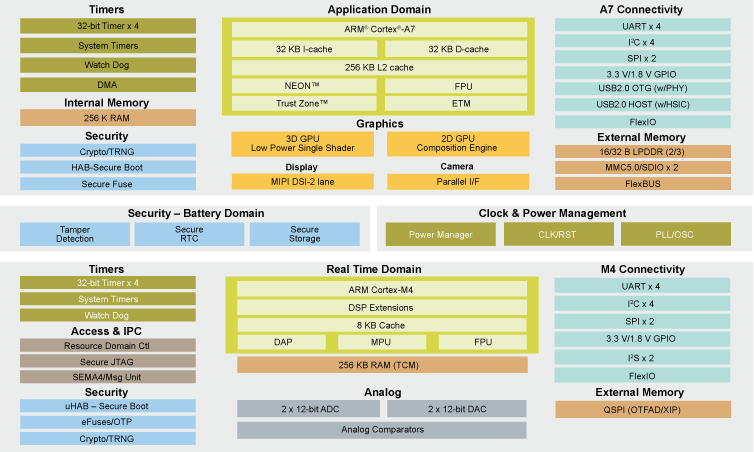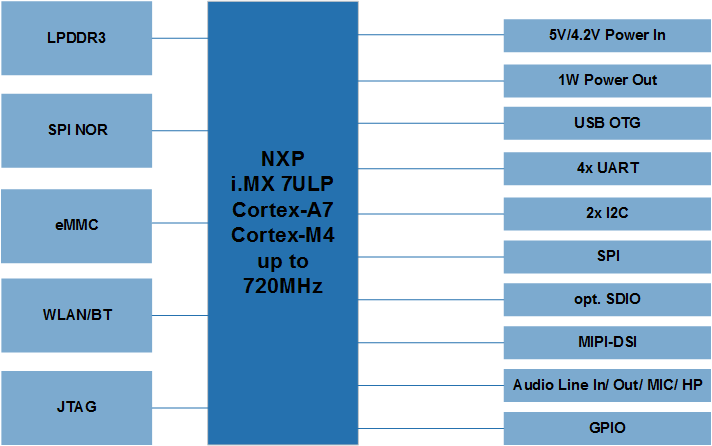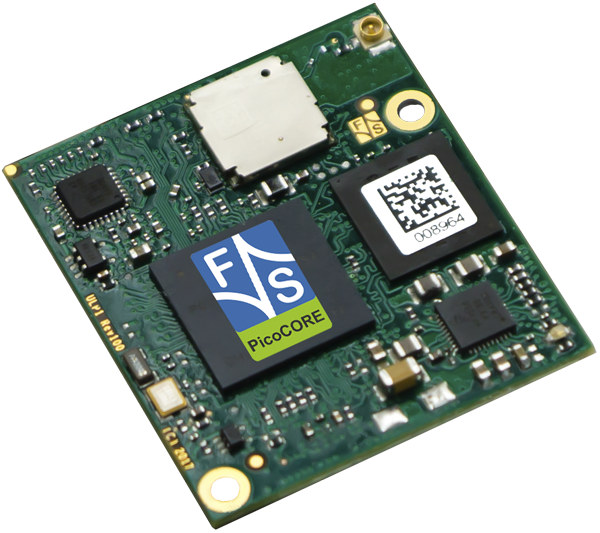NXP unveiled another variant of their i.MX 7 Cortex A7 processor last year, and I missed it. NXP i.MX 7ULP offers many of the same features as i.MX 7, but is manufactured using FD-SOI (Fully Depleted Silicon On Insulator) process technology to offer lower power consumption, as low as 15 mW or less in deep sleep, or 17 times less in comparison to i.MX 7 devices, while the dynamic power efficiency is improved by 50 percent on the real time domain (Cortex-M4).
I found out about it thanks to an email from F&S Elektronik Systeme about the introduction of their PicoCORE MX7ULP module – based on i.MX 7ULP processor – at the Embedded World 2018 conference.
PicoCORE MX7ULP CoM specifications:
- SoC – NXP i.MX 7ULP Arm Cortex-A7 processor @ up to 800 MHz, with Arm Cortex-M4 real-time core, and 2D/3D graphics accelerator
- System Memory – Up to 1GB LPDDR3
- Storage – Up to 64 MB SPI flash, up to 32GB eMMC flash, optional SD card
- Connectivity – WiFi 802.11b/g/n, optional BT 2.1/ EDR 3.0/ 4.1 LE
- Two board-to-board connectors exposing
- Display – MIPI DSI
- Touch Panel – Analog resistive and PCAP Touch ext. via I2C
- USB – 1x USB OTG device
- 2x UART, 2x I2C, 1x SPI
- 33x Digital I/O
- Audio – Line In/Out, Mic, Headphone
- Misc – RTC integrated in CPU
- Supply Voltage – +5VDC/ ±5% / 4.2V Battery
- Power Consumption – 1W typ.
- Operating Temperature – 0°C – +70°C; optional: -20°C – +85°C
- Dimensions – 40 x 35 mm
- Weight – ~10g

The module is suited to projects requiring small size and/or low energy consumption. The company will provide support for Linux running on the Cortex A7 core via the Yocto Project, and FreeRTOS for the Cortex-M4 core. A starter kit will also be available, but no details have been released at this stage.
Official launch is planned for Q3 2018, and Long Term Availability is ensured until 2028. More details and documentation should eventually be found on the product page.


Jean-Luc started CNX Software in 2010 as a part-time endeavor, before quitting his job as a software engineering manager, and starting to write daily news, and reviews full time later in 2011.
Support CNX Software! Donate via cryptocurrencies, become a Patron on Patreon, or purchase goods on Amazon or Aliexpress





